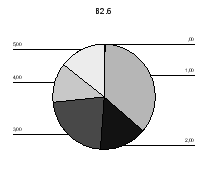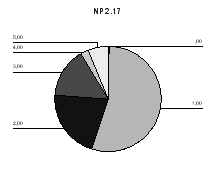Ключевые слова: эмоция, опыт, тревога.
The investigations, conducted by Pekrun, Goetz, Titz and Perry [5,c.91] have shown, that the anxiety is one of the most researched academic emotions, beginning in 1936 up to 1990 — «more than 1,000 studies have addressed achievement-related anxiety». The objective of this paper is to present the self-reported assessments of 12–15-aged students about their anxiety during the class. Due to the large number of studies, it is very difficult to define the term anxiety during the class. The most authors have concentrated their theoretical considerations on the test-achievement anxiety. However, I think that two other main conceptions are important for the explanation of class-related anxiety:
firstly, the multimodal behavioral approach to performance anxiety of Lazarus and Abramovitz [1];
secondly, Csikszentmihalyi's theory of flow which considerate the emotions like the varied combinations of learning tools and strategies [5].
According to Lasarus&Abramovitz «the multimodal approach assesses seven discrete but interactive components — behavior, affect, sensation, imagery, cognition, interpersonal relationships, and drugs/biological factors» [1,c.831]. It becomes clear that the multimodal approach emphasizes more dimensions of the anxiety during the lesson. To the performance, anxiety could be referred, for example, the feelings of tension, mental disorganization, the anticipation of task’s difficulty, panic, thinking about the lesson and so on.
The theory of Csikszentmihalyi describes the «flow» of the emotions during the learning process. Pupils seemed to «sink» deep into their academic activities. They perform the learning tasks with increased interest and also have the necessary skills for doing this. He regards the student’s engagement «as the culmination of concentration, interest and enjoyment, as opposed to boredom or apathy»[6, c.520].The scale of class-related anxiety, developed by Pekrun, Goetz&Perry[4, c.12] is in line with such a view, presented above, shortly. Their scale is comprised of twelfth statements addressing pupils’ multimodal assessments. Here are the main issues, illustrated by the relevant examples:
What should be done or stopped doing by the pupil? — for example, «Because I’m so nervous I would rather skip the class»;
What kinds of negative affects feel the pupils? — for example, «I get tense in class».;
What appears to generate certain negative cognitions? — for example, «I worry whether the demands might be too great».;
What kind of negative sensations were reported by the pupils? — for example «When I don’t understand something important in class, my heart races».;
Are there specific predominant self-images, reflecting success or failure? — for example «I get scared that I might say something wrong, so I’d rather not say anything».;
Could be detected any thoughts that undermine pupils’ emotional functioning? — for example «I feel scared».
The aforementioned authors define the anxiety as negative emotion, which refuse the prospective activities of pupils. The control-value theory of Pekrun links activity emotions with different appraisal antecedents[2, c.319]. The control and values are directed to the action, only. Further, the author notes that anxiety can occur unconsciously. Habitualized appraisals can be based on the situational perceptions alone. Therefore, they influence the everyday academic emotional experience negatively, in the case of the habitual anxiety[2, c.324].
The purpose of this study was to estimate the reliability of a scale anxiety. Furthermore, I conducted a one-way analysis of variance (ANOVA) to examine whether anxiety scale’s scores were related to the grade of the students. Participants were 343 students from four junior high schools in district Smolyan. The sample includes students from the fifth (114), sixth (162), seventh (49) and eighth(18) grade. The anxiety scale, developed by Pekrun at all, is composed of ten items using a five-point Likert scale from «strongly disagree», «disagree», «neither agree, nor disagree», «agree» and «strongly agree» [4]. I conducted analyses in several stages using SPSS 10. for Windows.
The present research explored answers to the next major questions:
Whether anxiety’s scale has high reliability in the sample of the adolescents?
Do pupils in all three grade groups differ in their class-related anxiety?
The calculation of Cronbach’s alpha for the scale is a commonly employed index of reliability. In this sample, the coefficient is.83 (number of cases — 342) which is comparable with the measure of Pekrun, Goetz&Perry [4,c.12] — =86. The scale mean in the adolescent’s sample is lower — 22.52, than in the original student’s research — 27,68. The scale standard deviation amounted to 8.74 (in the research of Pekrun at all is 8.30). These results confirm the unidimensionality of a set of items, included in the questionnaire.
The items in the scale don’t correlate to each other very strong. For example, the correlation coefficient between «Even before class, I worry whether I will be able to understand the material» and «Because I’m so nervous I would rather skip the class» is. 1944; between «I worry whether the demands might be too great» and «I get tense in class» is 4330; the highest is the correlation, between «I worry whether I’m sufficiently prepared for the lesson» and «I get scared that I might say something wrong, so I’d rather not say anything» — 5144. The examples confirm the link between anxiety and actions of pupils. Obvious, pupil’s anxiety has many different dimensions, which cover those, who are afraid to do something wrong; those who want to make a good impression on both, the teacher and the classmates; those, who have fear to make mistakes; and those, who cannot regulate their physical sensations.
Furthermore, I will exemplify the descriptive statistics of some of the statistics in the sample. The pie-chart № 1 summaries the data for the statement «I worry whether I’m sufficiently prepared for the lesson» 35,9 % of the pupils are strongly disagreed and 14,9 % — disagree with this statement. 22,4 % of them are neither agree, nor disagree and respectively 12 % and 14,6 % — are partially or completely agree (there is no one answer). In this case, the strongly negative appraisals are only about a third of all.

Fig. 1. Pie-chart № 1
The pie-chart № 2 clarifies the statistics of the statement «I get tense in class». 54,8 % of the pupils are strongly disagreed and 21 % — disagree with this statement; 15,2 % are neither agree, nor disagree and 2,6 % and 6,1 % of all respondents tend to give a positive appraisal.

Fig. 2. Pie-chart № 2
The pie-chart № 3 illustrates the frequencies of the appraisals about the statement «When I don’t understand something important in class, my heart races». 69,7 % assess it strongly negative; however, 12,2 % are disagreed; 9,3 % — neither agree, nor disagree; and 4,7 % agree together with 3, 5 % who are strongly agreed with this statement.

Fig. 3. Pie-chart № 3
The above given examples are used to present three degrees of adolescent’s negative assessments about cognitive, affective and sensational dimensions of anxiety. The mean scores of the all mentioned statements manifested low anxiety in this sample of pupils (corresponding scores are 2,5; 1,8 and 1,5). The self-reported low class-related anxiety could be explained by the achievement goals, defined «as competent-relevant aims that individuals strive for in achievement settings»[3,c.115]. If the pupils don’t perceive the classroom setting as competitive, they experience general positive emotions.
Based on the initial results, I have conducted additionally a multivariate (generalized linear model) with a smaller sample of students: 46 from fifth grade, 51 from sixth grade, and 49 from seventh grade. All students attend one and the same school in the town of Smolyan. The calculated effect sizes (eta suqared — % of variance explained) for all items in the scale indicate the following information about the strength of association between each of them and the independent variable «grade».
The effect size is small for the next items:
Even before class, I worry whether I will be able to understand the material (0 %);
Because I’m so nervous I would rather skip the class (1,1 %);
I worry whether I’m sufficiently prepared for the lesson (1,5 %);
I get tense in class (0 %);
I feel nervous in class (1,3 %);
When I don’t understand something important in class, my heart races (1,8 %).
The effect size is medium for all other items:
I worry whether the demands might be too great (7,4 %);
Thinking about class makes me feel uneasy (6,2 %);
When I think about class, I get queasy (5,8 %);
I feel scared (4,9 %);
I worry the others will understand more than me(6,2 %);
I get scared that I might say something wrong, so I’d rather not say anything (5,8 %).
For the post-hoc analysis was applied Tuckey’s procedure. The table for multiple comparisons makes known the differences between the grades. It was detached statistically significant differences of means between fifth and seventh grade according to the following items:
I worry whether the demands might be too great (8958);
Thinking about class makes me feel uneasy (6265);
When I think about class, I get queasy (7352);
I feel scared (6710);
I worry the others will understand more than me (6846).
«I get scared that I might say something wrong, so I’d rather not say anything» is the statement which distinguishes pupils in fifth, sixth and seventh grade. Obviously, within a general process of age development, emotional experience induces changes in the strategies of acting during the lessons. It seems reasonable to assume that the changes occur slowly over two years. The influence of the cognitive mechanisms' increases with age and the antecedents of the anxiety are considered more conscious. The adolescent’s anxiety is important because of consequences associated with applied teaching strategies and copping with difficult situation in everyday school life.
The scale, developed by Pekrun, Goetz&Perry, is reliable instrument for measuring anxiety of 12–15-aged pupils. It is of great significance to know more, how pupils perceive the characteristics of classroom environment for diagnosing their motivation and engagement. The expectancies for failure reduce the willingness of pupils to make an effort during the lessons. Knowing more about antecedents of the anxiety in the adolescence, teachers can support their pupils and contribute to its beneficial transformation into positive activity emotions.
References:
- Lazarus Arn., Abramovitz Arn. A multimodal behavioral approach to performance anxiety. JCLP, 2004, Vol.60(8), 831–840.
- Pekrun R. The control-value theory of achievement emotions: assumptions corollaries, and implications for educational research and practice.Educational Psychological Review, 2006, 18:315–341.
- Pekrun R., Elliot Andr., Maier M. Achievement goals and achievement emotions: testing a model of their joint relations with academic performance. Journal of Educational Psychology, 2009, Vol.101, № 1, 115–135.
- Pekrun R., Goetz Th., Perry R. Achievement Emotions Questionnaire (AEQ). 2005. Manual.
- Pekrun R., Goetz Th., Titz W., Perry R. Academic emotions in students’ self-regulated learning and achievement: a program of qualitative and quantitative research. Educational Psychologist,2002. 37(2), 91–105.
- Tramonte L., Willms D. The prevalence of anxiety among middle and secondary school students in Canada. Canadian Journal of Public Health, 2010, Vol.101, November/December, pp.519–522.
Acknowledgements: The research was financially supported by the University of Plovdiv, Bulgaria







